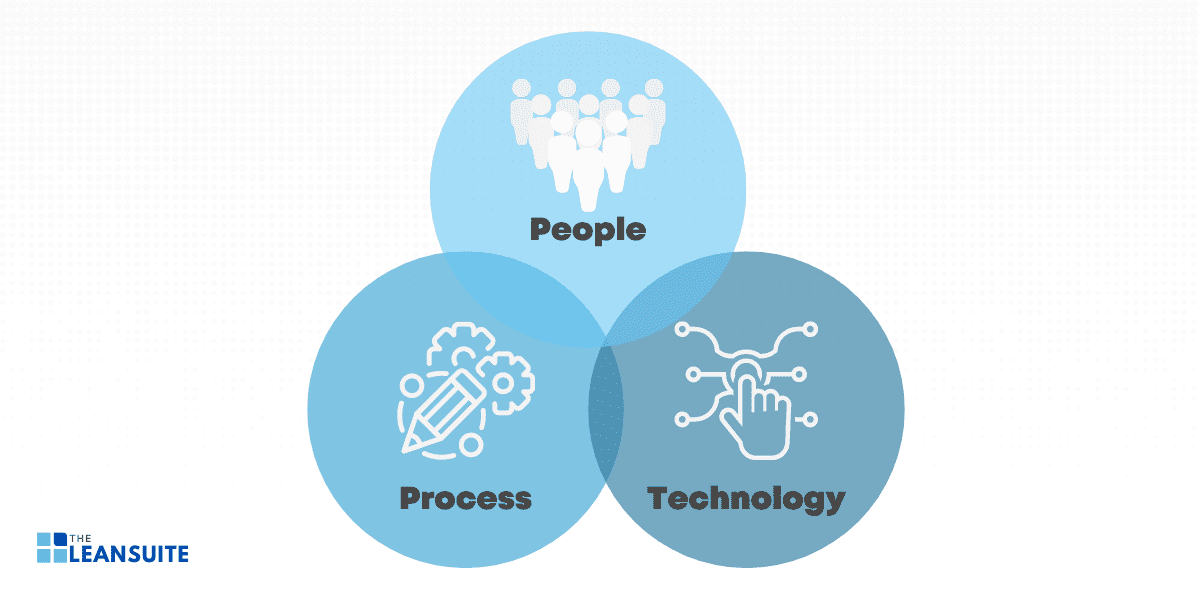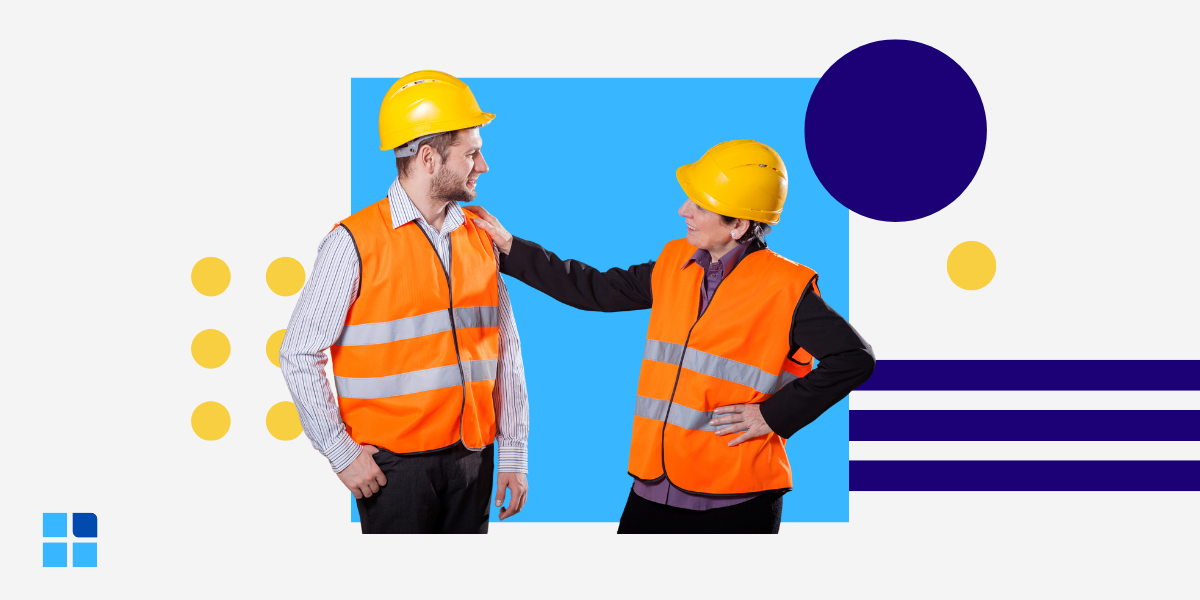The PPT framework, also known as the Golden Triangle, has been used by many businesses to improve the operational efficiency of their employees and tools. Everything from leadership to digital transformation, organizational talent, and management practices, need to work closely together. This will lead to effective business growth and development. In short, The PPT framework, used in conjunction with existing practices, ensures that businesses achieve stronger and better results.
This blog will help you understand what the PPT framework is, and the three elements that encompass it.
The PPT Framework Explained
PPT stands for people, processes, and technology. As standalone components, these elements are essential for organizational transformation and management. As a concept, the PPT framework is all about how those three elements interact with each other and drive action:
- — People perform the work
- — Processes make the work more efficient
- — Technology helps people perform their work and automates processes
Understanding the PPT Framework
The goal of the PPT framework is to balance the people, processes, and technology, and to maintain good relationships among them. Doing so will allow businesses to create a strong foundation for digital transformation, and achieve operational efficiency and harmony within their organizations. To transform your organization using the PPT framework, you’ll need to first complete an audit of your existing processes and technology to understand what’s working and identify the problems.
Think of the PPT framework as a three-legged table — if one of the legs is shorter or longer, the entire table will lose its balance. Therefore, you’d need to adjust the legs to keep the table balanced and standing. Similarly, if the technology changes, you need to modify the people and processes to adapt to the new tools. For instance, a lot of businesses implement new tools and technology thinking that it will fix their problems. But, technology is only as effective as the processes and people who use it.
In short, maintaining the balance and optimizing the relationship between people, processes, and technology is important. If strong processes aren’t implemented, people’s actions will be highly ineffective. Additionally, the value delivered by technology will be wasted. If people aren’t trained and educated on how to properly use new technology or if the new technology doesn’t integrate with existing processes, then the company won’t create any value from its investment in technology. On the contrary, if the organization focuses too much on the process, they’ll have a good plan on paper, but, they won’t have the right people or the technology to support it.
So, what do the three elements of the PPT framework encompass?

The People
The people refers to those who do the work, and they are arguably the most important element of the PPT framework. People are the ones who use the technology, refine processes, and are the very foundation of business. What’s more, the difference between a successful organization and a struggling one is the people they onboard. That is to say, businesses need to hire the right employees with the right skills, knowledge, experience, and attitude to represent your project and work on them to generate the anticipated results. When taking on a new project, it’s important that you try to redirect, acquire, or wait for the right people to do the job. By finding the right people to work on the process component of the PPT framework, this will result in a high-performing team.
A lot of companies focus too much and technology and processes that they often forget about the people involved. Essentially, it’s important to ensure that teams are made up of the right people, and that there is sufficient communication. The people need their roles clearly defined so that everyone knows what their responsibilities are. Doing so will help with process deployment, personnel hiring, decision making, and technology selection. By having the right people work in an organization, you can expect them to make the right decisions for themselves with the organization’s best interests in mind.
The Process
The process refers to the set of steps or actions that need to be taken to achieve a particular goal. It mostly defines the “how” aspect — How will we achieve the desired goal? How will we leverage the people and technology to solve a business problem? The process is an essential element of the PPT framework because without it, people wouldn’t know what to do. By having the right processes aligned with the right people, this helps organizations know what must be done to ensure that their customers receive the right value.
By definition, processes are repetitive — they involve repeating actions that theoretically produce the same result, independent of who performs them. However, processes need to change along with the time, environment, and needs. That is to say, putting together new technology with old processes doesn’t make sense. Doing so will only create expensive old processes. Therefore, it’s important that organizations evaluate their existing processes when looking into new technologies. They need to determine what processes can be replaced, and what new processes need to be formulated, in order to get the most return on investment. Additionally, processes can also be improved, rather than replaced or created entirely from scratch, using relevant process improvement methodologies.
Process Implementation Tips
When designing and implementing processes, there are a few things to keep in mind:
- — Ensure people know how and where they fit into the workflow
- — Identify the key steps or actions of the process
- — Ensure the people doing the work receive the right training on the new processes
- — Provide clear and adequate instructions
- — Ensure that there’s a system for review in place before beginning any new process
- — Consider how the success of a process will be measured
Once organizations figure out the people and the processes, they should then consider the technology to support them.
The Technology
Technology won’t be able to fix all business problems. However, it does give people the tools they need to implement the process and also helps automate some parts of the process. The latest and fastest technology typically create the most impact, and it’s very tempting to get attracted to them. But, organizations need to make sure that the technology aligns with their organization, and its people and process. Investing in technology without considering the impact on your people and process is like purchasing a pool without knowing how to swim.
More often than not, companies make huge investments into technology to gain a competitive advantage. The people and process are just a second thought. Then they try to fit the people and process into this new technology, but the outcome is not ideal. In other words, investing in technology is useless without the right people following the right process to support it. For that reason, technology should always be the final element of the PPT framework to consider after the problem is clearly identified, the people are hired and trained, and the process requirements have been defined.
It is recommended that you start small with technology and implement the processes by onboarding the right people. Once you have the results to show its effect, then you can move up and scale things.





